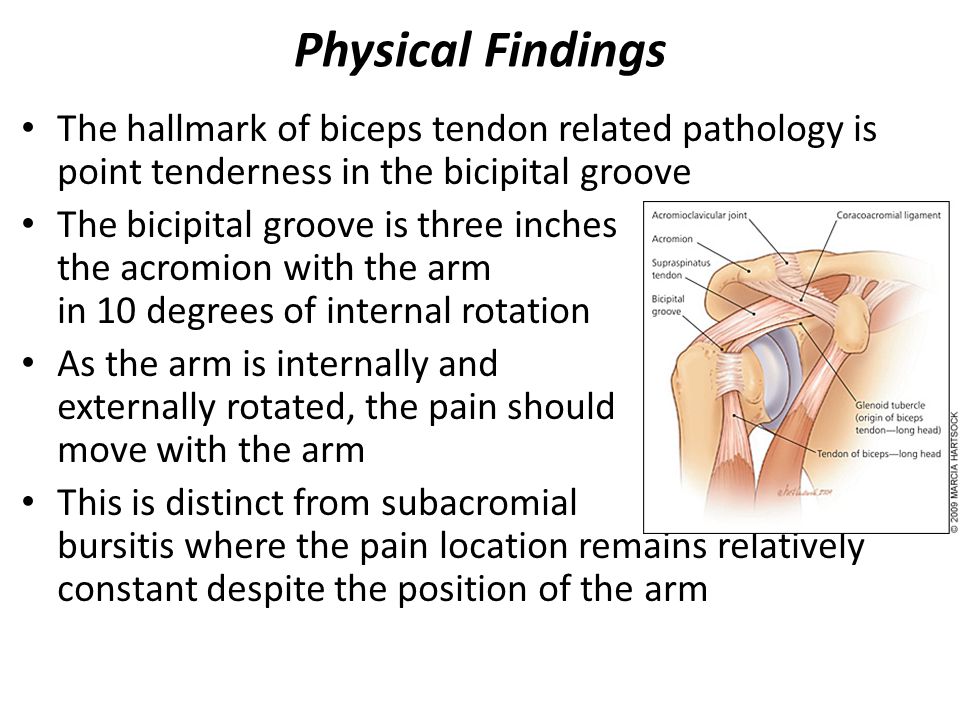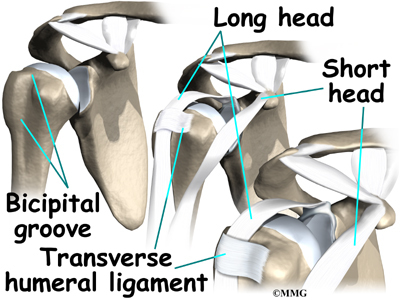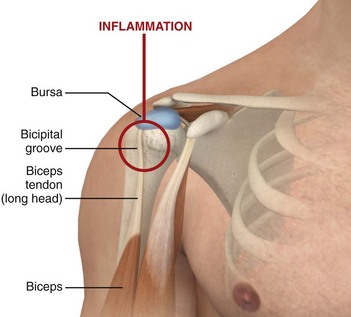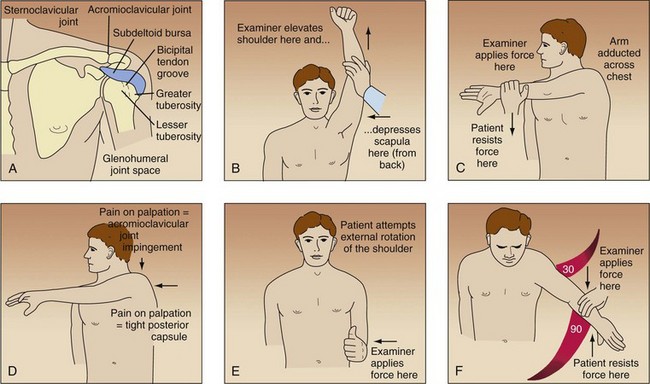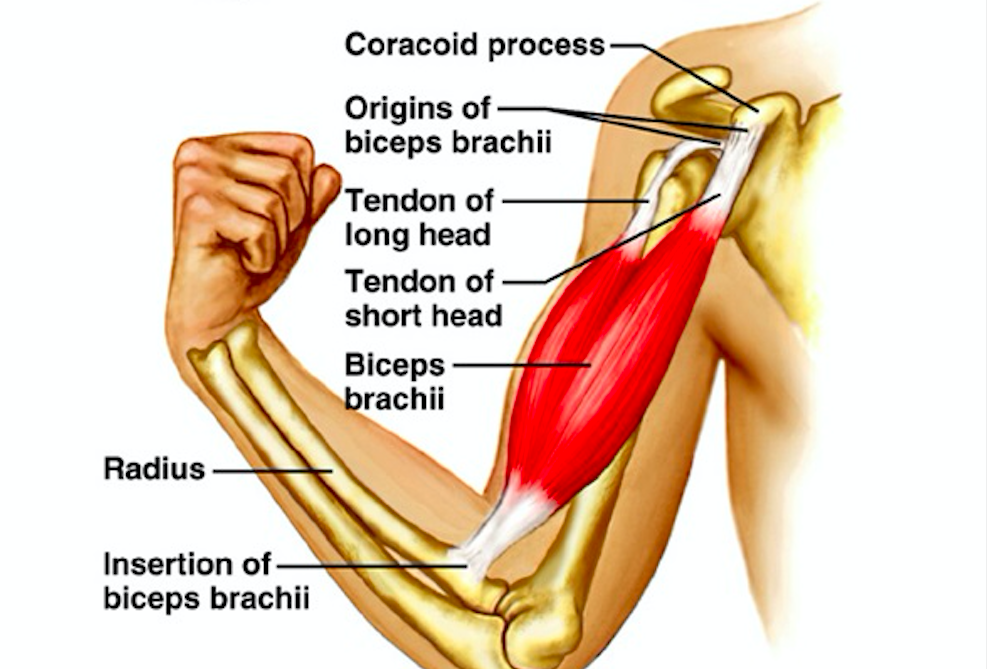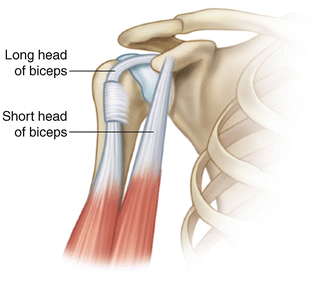Bicipital Groove Point Tenderness

The hallmark of biceps tendon related pathology is point tenderness in the bicipital groove.
Bicipital groove point tenderness. Without this finding it is extremely unlikely the lhb is involved in the patient s symptoms. The most common isolated clinical finding in biceps tendinitis is bicipital groove point tenderness with the arm in 10 degrees of internal rotation. The most common finding of biceps tendon injury is bicipital groove point tenderness 1 during physical examination the patient stands or sits with the arm at his or her side in 10 degrees of. The bicipital groove is best palpated approximately three inches below the acromion with the arm in 10 degrees of internal rotation 43.
The tendon is exposed on the anterior shoulder as it passes through the humeral bicipital groove and inserts onto the superior aspect of the labrum of the glenohu. Comparing the contralateral shoulder is helpful. Local anesthetic injections into the biceps tendon sheath may be therapeutic and diagnostic. Point tenderness should move in conjunction with the bicipital groove as the examiner rotates the affected arm.
Repetitive overhead motion of the arm initiates or exacerbates the symptoms. Bicipital tendinitis or biceps tendinitis is an inflammatory process of the long head of the biceps tendon and is a common cause of shoulder pain due to its position and function.


